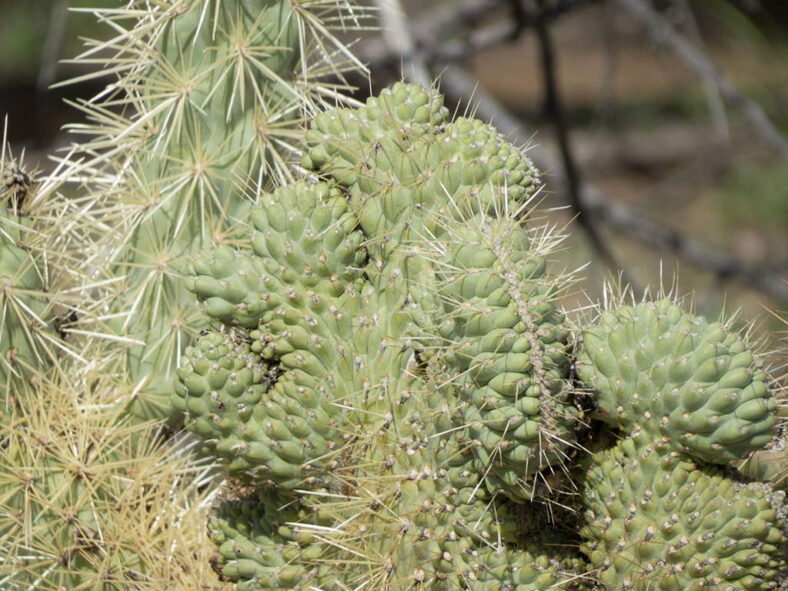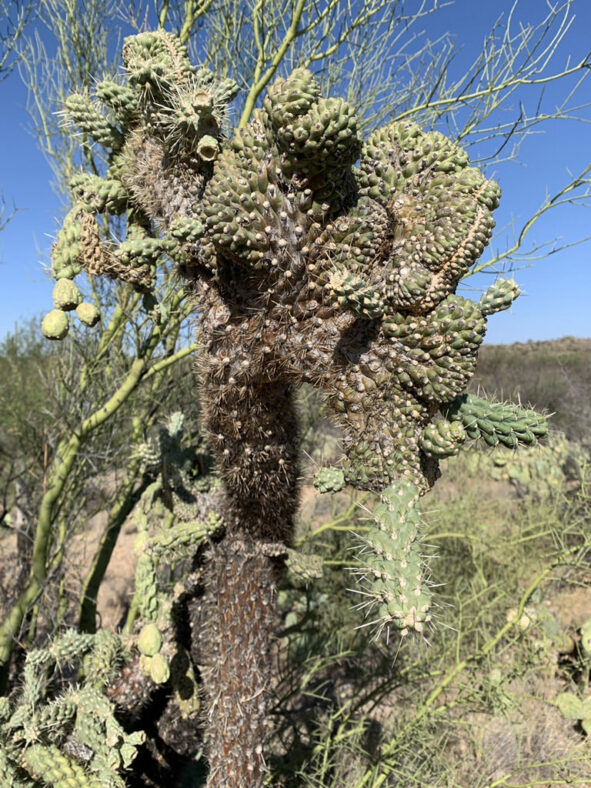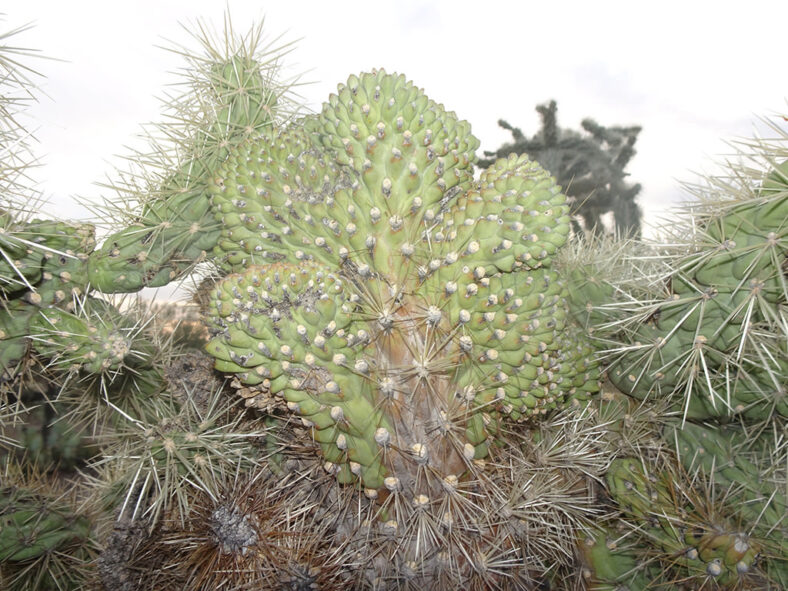Cylindropuntia fulgida f. cristata is smaller than the normal form, but it grows in more interesting shapes.
Scientific Name
Cylindropuntia fulgida f. cristata P.V.Heath
Accepted Scientific Name
Cylindropuntia fulgida (Engelm.) F.M.Knuth
Scientific Classification
Family: Cactaceae
Subfamily: Opuntioideae
Tribe: Cylindropuntieae
Genus: Cylindropuntia
Etymology
The formal epithet "cristata" (pronounced kris-TAY-tuh) means "tufted, crested, plumed."
Origin
Cylindropuntia fulgida f. cristata is a form of Cylindropuntia fulgida with mutated growth.
Description
Cylindropuntia fulgida f. cristata is a peculiar cactus that creates fascinating sculptural forms as it matures. The contorted stem segments are gray-green with yellowish or sometimes pale pinkish spines that darken to brown over time. Each specimen has a unique shape and often displays both mutated and normal growth.

How to Grow and Care for Cylindropuntia fulgida
Light: Cylindropuntia fulgida f. cristata thrives in full sun, but some shade during the midday and afternoon hours can help prevent sunburn in hot climates. When grown indoors, a window that receives sunlight for 6 hours a day works best.
Soil: This cactus requires a well-draining soil mix. So, use a commercial cactus potting mix or create your own.
Temperature: Extremely tolerant of high temperatures, Cylindropuntia fulgida f. cristata prefers cooler temperatures in winter. It grows best in USDA Plant Hardiness Zones 8b to 10b, with average minimum winter temperatures ranging from 15°F to 40°F (-9.4°C to 4.4°C).
Watering: From spring to fall, water moderately and let the soil dry out completely before watering again. In most areas, rainfall will be enough for established plants. If potted, never let the container sit in water. During the winter, suspend the watering.
Fertilizing: Cylindropuntia fulgida f. cristata does not need fertilizer when planted in the ground. However, it will benefit from fertilizing during the growing season when grown in a container. Apply a water-soluble fertilizer. Suspend feeding during the winter when the plant goes dormant.
Repotting: Repot only when the cactus becomes potbound or is too large and unstable in its container. Choose a slightly larger container with drainage holes at the bottom. The best time for repotting is late winter or early spring.
Propagation: Cylindropuntia fulgida f. cristata can be propagated by stem cuttings during the growing season.
Learn more at How to Grow and Care for Opuntia.
Toxicity of Cylindropuntia fulgida
Cylindropuntia fulgida f. cristata is not toxic to humans or pets. However, be careful when around it and try to avoid touching it.
Links
- Back to genus Cylindropuntia
- Succupedia: Browse succulents by Scientific Name, Common Name, Genus, Family, USDA Hardiness Zone, Origin, or cacti by Genus
Photo Gallery
Click on a photo to see a larger version.


